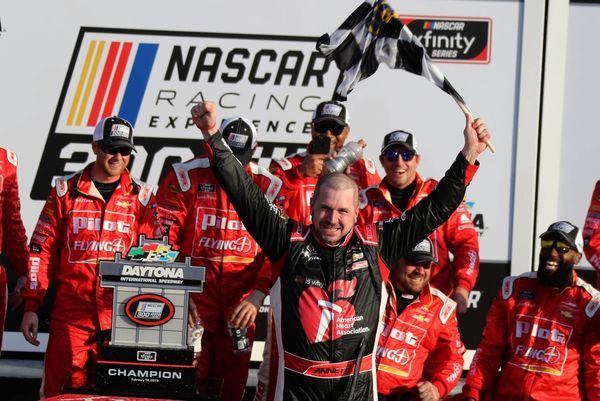
In 2015, Marvel Studios was at the height of its power. A second Avengers movie had proved the success of the first one wasn’t a fluke (even if “Age of Ultron” wasn’t quite as well-received). The Marvel Cinematic Universe was coasting towards another major crossover with “Captain America: Civil War,” which would introduce Tom Holland’s Spider-Man and Chadwick Boseman’s Black Panther to the MCU. The studio seemed unstoppable, and it was about to take its biggest risk yet.
Released on July 17, 2015, “Ant-Man” was a $130 million blockbuster (cheap by MCU standards at the time). It starred an actor best known for making R-rated comedies as a superhero that casual movie fans had never even heard of. We all know what happened next: “Ant-Man” was a hit and Paul Rudd became Marvel’s latest Avenger, returning to star in two more sequels and various crossovers.
A decade later, as the MCU’s star is at risk of burning out, “Ant-Man” best represents what the studio was once capable of pulling off—and what it seems incapable of today.
‘Ant-Man’ and Its Unexpected Success
“Ant-Man” was supposed to come out way earlier than 2015. In 2006, Marvel boss Kevin Feige announced the first three movies that would launch the MCU: “Iron Man,” “Hulk,” and… “Ant-Man.” The decision to build an entire cinematic universe on that particular trio seemed surprising, but the choice to put Edgar Wright (known for genre parodies like “Shaun of the Dead”) in charge of “Ant-Man” was enough to win fans over. Of course, none of that actually came to pass.
Seven years after that initial announcement, Paul Rudd officially joined the movie in December 2013. Less than a year later, Wright departed over creative differences. Rudd and Adam McKay (fresh off “Anchorman 2”) rewrote the script, while Feige tapped an unknown Peyton Reed to direct.
In an interview with The Hollywood Reporter at the time, Feige explained the thinking behind what was essentially a heist movie about a deadbeat dad.
“It was very clear that ‘Ant-Man’ was going to be slightly different,” he said. “It was an opportunity to tell a more intimate story.”
Yes, it was definitely different
After watching the Avengers save the world twice, traveling through space with Thor, and uncovering Nazi conspiracies with Captain America, “Ant-Man” proved Marvel could also tell smaller stories with much lower stakes. By 2015, the MCU’s brand was strong enough to bring in a crowd for lesser-known heroes, and the promise of good writing, acting, and action was enough to leave those crowds feeling satisfied.
“Ant-Man” also proved the studio had seemingly cracked the code for superhero filmmaking without needing to rely on the hook of its extended universe, even if the film does have some loose connections and one notable Avengers cameo.
“’Ant-Man’ is one of the best examples of how a movie can do both,” Feige said. “It’s absolutely a stand-alone film about Hank Pym and Scott Lang, but it is within this universe.”
The risk paid off. “Ant-Man” made over $500 million on a budget of roughly $130M. But in hindsight, it’s possible Marvel learned the wrong lessons from this success. For a moment, the studio seemed invincible, but in recent years, it’s become clear the MCU is more than capable of producing a flop.
Ant-Man’s influence
Before we get too far ahead of ourselves, it’s worth noting that Ant-Man wasn’t Marvel Studios’ first big swing on an unknown superhero. A year earlier, the MCU offered up “Guardians of the Galaxy,” an ensemble space epic about an equally obscure gang of misfits. But “ragtag sci-fi superhero team” sells itself in a way that “tiny thief who loves bugs” doesn’t. Plus, Guardians came with the promise of more details about Thanos, the supervillain Marvel had been teasing for years. All “Ant-Man” had to offer was Michael Douglas shouting “Ants!” in a promotional video.
The success of “Ant-Man” gave Marvel the confidence to produce even more movies (and later, TV shows) about even less well-known characters, with mixed results. “The Eternals.” “Moon Knight.” “Ms. Marvel.” “Shang-Chi.” It’s possible none of those projects would exist today if not for “Ant-Man.” (Whether you view that as a good thing or a bad thing depends on your tolerance for the last five years of the Marvel Cinematic Universe.)
Meanwhile, “Ant-Man”’s two sequels have also been mixed, to say the least. The direct follow-up, “Ant-Man and the Wasp,” stayed true to the original with another relatively grounded heist story. However, 2023’s “Ant-Man and the Wasp: Quantumania” made the short-sighted gamble that fans cared enough about these characters to watch them in the kind of far-flung sci-fi setting better suited for the Avengers or the Guardians of the Galaxy (all that terrible CGI didn’t help either).
Ultimately, its legacy is patchy at best and damaging at worst. It made the MCU feel invincible, and any fan can tell you that’s exactly the moment when a superhero is most likely to stumble and fall. Then again, nothing that came afterward can change the fact that it’s still a great movie, and a shining example of what Marvel Studios is capable of when it takes the time to get it right.
Have a tip we should know? [email protected]







